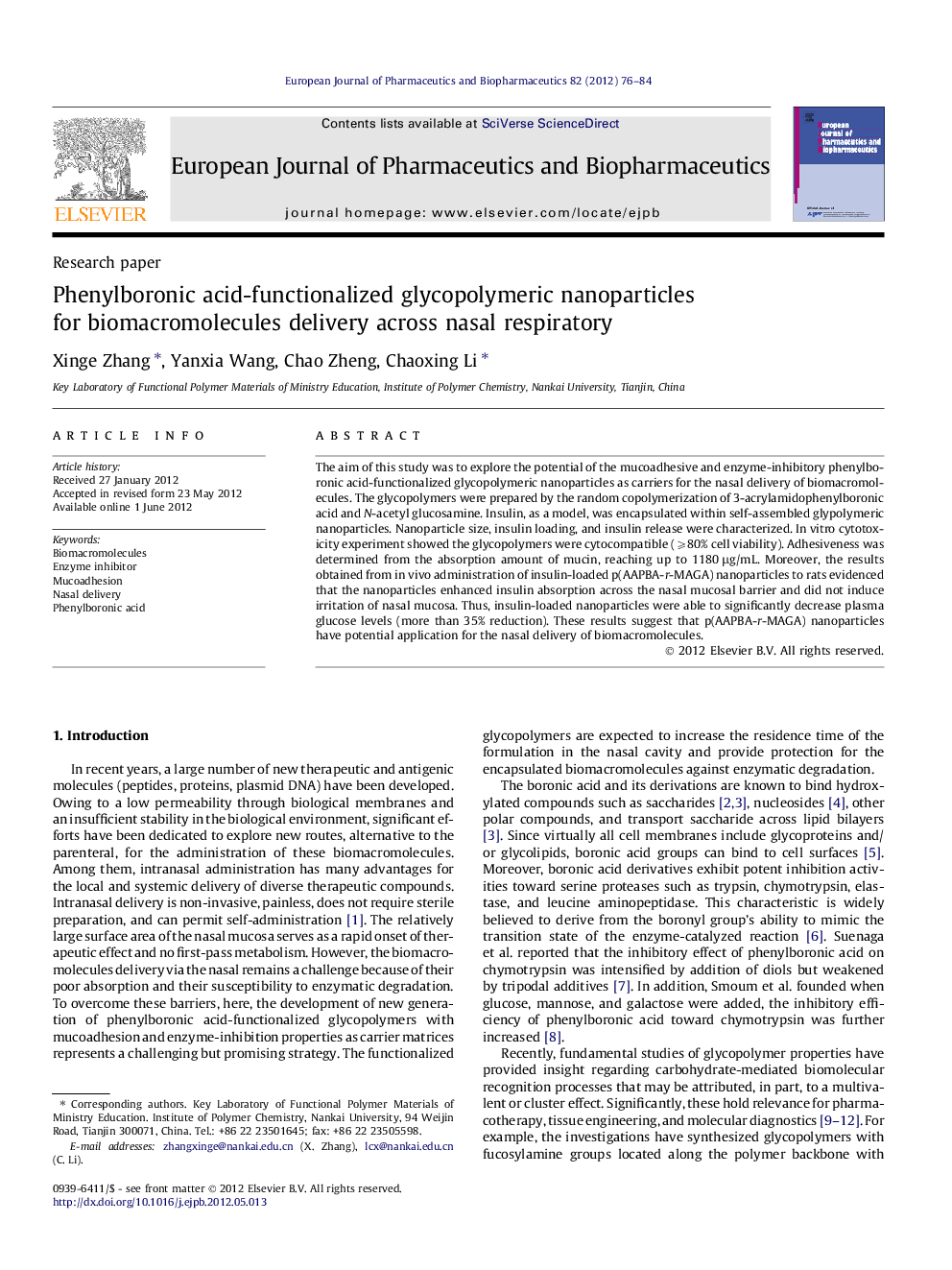| Article ID | Journal | Published Year | Pages | File Type |
|---|---|---|---|---|
| 2085296 | European Journal of Pharmaceutics and Biopharmaceutics | 2012 | 9 Pages |
The aim of this study was to explore the potential of the mucoadhesive and enzyme-inhibitory phenylboronic acid-functionalized glycopolymeric nanoparticles as carriers for the nasal delivery of biomacromolecules. The glycopolymers were prepared by the random copolymerization of 3-acrylamidophenylboronic acid and N-acetyl glucosamine. Insulin, as a model, was encapsulated within self-assembled glypolymeric nanoparticles. Nanoparticle size, insulin loading, and insulin release were characterized. In vitro cytotoxicity experiment showed the glycopolymers were cytocompatible (⩾80% cell viability). Adhesiveness was determined from the absorption amount of mucin, reaching up to 1180 μg/mL. Moreover, the results obtained from in vivo administration of insulin-loaded p(AAPBA-r-MAGA) nanoparticles to rats evidenced that the nanoparticles enhanced insulin absorption across the nasal mucosal barrier and did not induce irritation of nasal mucosa. Thus, insulin-loaded nanoparticles were able to significantly decrease plasma glucose levels (more than 35% reduction). These results suggest that p(AAPBA-r-MAGA) nanoparticles have potential application for the nasal delivery of biomacromolecules.
Graphical abstractEfficacy of mucoadhesive and enzyme-inhibitory p(AAPBA-r-MAGA) nanoparticles in enhancing the in vivo nasal absorption of insulin (A), and the in vivo transport of insulin across nasal mucosal epithelial cells in rats (B).Figure optionsDownload full-size imageDownload high-quality image (50 K)Download as PowerPoint slide
